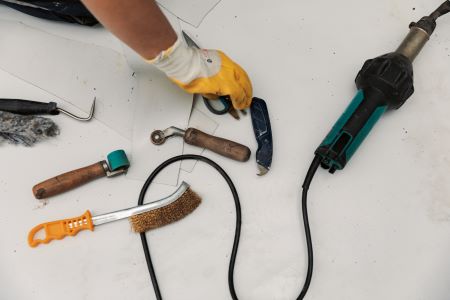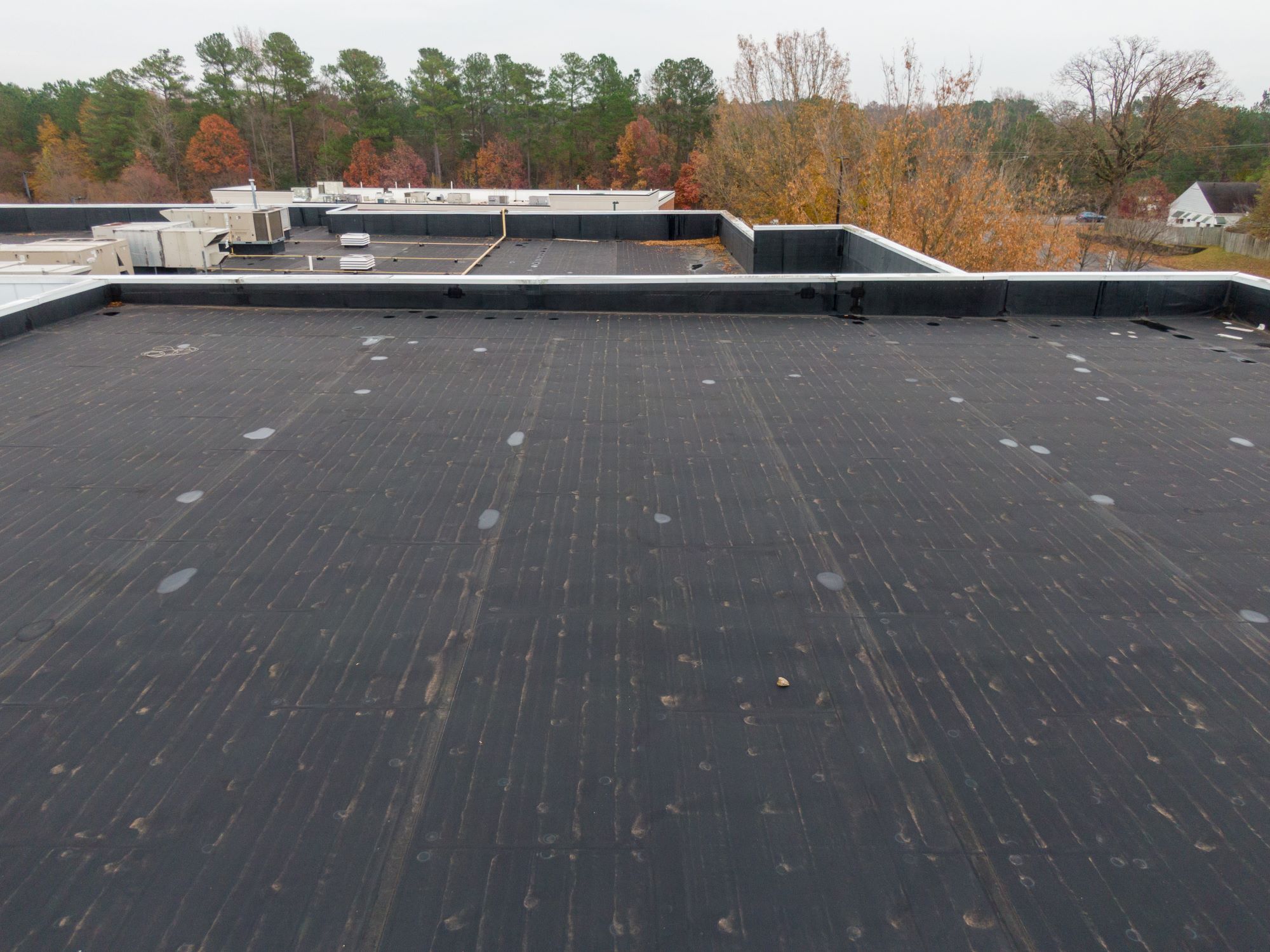Commercial flat roofs are a popular choice for businesses due to their cost-effectiveness and ease of installation. However, they are not immune to damage and require proper maintenance to extend their lifespan. Understanding the common causes of commercial flat roof damage is essential for preventing costly repairs and ensuring the longevity of your roofing system. In this comprehensive guide, we will explore the various factors that contribute to flat roof damage, provide roofing DIY tips for maintenance, and discuss the role of roofing ventilation in preserving the integrity of your commercial flat roof.
Flat roofs are commonly found on commercial buildings, warehouses, and industrial facilities. While they offer several advantages, such as cost-effectiveness and the ability to create rooftop spaces, they are susceptible to various forms of damage. It’s essential for business owners and property managers to be aware of these potential issues and take proactive measures to address them. This guide aims to shed light on the common causes of commercial flat roof damage, offer practical DIY tips for roofing maintenance, and highlight the importance of proper ventilation in preserving the structural integrity of your roof.

Common Causes of Commercial Flat Roof Damage
Commercial flat roofs can experience damage from a variety of sources. Understanding these common causes is the first step in preventing and addressing issues that may arise. Here are some of the most frequent culprits:
1. Weather and Climate Conditions
Extreme Temperature Fluctuations: Commercial flat roofs are exposed to the full force of weather fluctuations. Rapid temperature changes, especially in regions with hot summers and cold winters, can cause materials to expand and contract, leading to cracks and leaks.
UV Radiation: Prolonged exposure to UV radiation from the sun can deteriorate roofing materials, causing them to become brittle and less effective at repelling water.
Heavy Rainfall: Flat roofs are prone to pooling water, which can lead to leaks if not adequately drained. Prolonged exposure to standing water can also weaken roofing materials over time.
Snow and Ice: Accumulated snow and ice can place significant weight and stress on a flat roof. The melting and refreezing of snow can also create ice dams, which can lead to leaks.
2. Poor Installation and Workmanship
Inadequate Drainage: Improper slope and drainage systems can result in water pooling on the roof. This standing water can accelerate deterioration and lead to leaks.
Faulty Seams and Joints: If seams and joints in the roofing membrane are not correctly sealed during installation, they can become weak points where water can infiltrate.
Subpar Materials: The use of low-quality or inappropriate roofing materials can lead to premature roof failure. It’s crucial to use materials that are suited to your specific climate and intended use.
3. Lack of Maintenance
Neglect: Failure to perform regular inspections and maintenance can allow small issues to escalate into significant problems. Routine maintenance is essential for extending the lifespan of your flat roof.
Debris Accumulation: Leaves, branches, and other debris can accumulate on a flat roof, clogging drains and creating conditions conducive to leaks and damage.
4. Ponding Water
Inadequate Drainage: As mentioned earlier, poor drainage systems can result in water ponding on the roof. Ponding water can accelerate the breakdown of roofing materials and lead to leaks.
5. Roof Penetrations
HVAC Units and Vent Pipes: Penetrations in the roof, such as HVAC units and vent pipes, are potential sources of leaks if not properly sealed and maintained.
Roof Access: Frequent foot traffic on the roof, especially in areas with access doors or rooftop equipment, can cause damage to the roofing membrane.
6. Aging and Wear and Tear
Natural Aging: Over time, all roofing materials will naturally degrade. This process can be accelerated by exposure to harsh weather conditions and inadequate maintenance.
7. Vegetation and Mold Growth
Moss and Algae: Moisture and debris accumulation on a flat roof can create an environment conducive to moss and algae growth. These organisms can deteriorate roofing materials and lead to leaks.
Mold and Mildew: Moisture trapped in roofing materials can also promote mold and mildew growth, which can be harmful to the roof’s structural integrity and the building’s indoor air quality.
Roofing DIY Tips for Maintenance
Regular maintenance is crucial for preventing and addressing flat roof damage. While some maintenance tasks may require professional assistance, many can be performed by property owners or maintenance staff. Here are some roofing DIY tips for keeping your commercial flat roof in good condition:
1. Regular Inspections
Schedule routine inspections at least twice a year, preferably in the spring and fall. Look for signs of damage, such as cracks, blisters, and loose seams.
Pay attention to the condition of the roof’s drainage system, ensuring that it is free of debris and functioning correctly.
2. Cleaning and Debris Removal
Remove leaves, branches, and debris from the roof’s surface and drainage system regularly.
Clean moss, algae, and mold growth using appropriate cleaning solutions and tools. Be cautious not to damage the roofing membrane during cleaning.
3. Seal Penetrations
Inspect and reseal roof penetrations, such as HVAC units, vent pipes, and access doors, as needed.
4. Prompt Repairs
Address minor issues promptly to prevent them from becoming major problems. Use roofing patch materials to seal small cracks and tears.
5. Snow Removal
If your area experiences heavy snowfall, consider removing snow from the roof to prevent excessive weight and ice dam formation.
6. Trim Overhanging Branches
Trim branches from nearby trees to prevent them from overhanging and potentially damaging the roof.
7. Ensure Proper Ventilation
Check the ventilation systems in your building to ensure that they are functioning correctly. Proper ventilation can help regulate temperature and humidity within the building, reducing the risk of roof damage.
The Role of Roofing Ventilation
Proper roofing ventilation is often overlooked but plays a significant role in preserving the integrity of your commercial flat roof. Here’s why ventilation matters:
1. Temperature Regulation
Ventilation helps regulate the temperature of the roofing system. It prevents excessive heat buildup during hot weather and reduces the risk of thermal shock caused by rapid temperature fluctuations.
2. Moisture Control
Effective ventilation helps manage moisture levels within the roofing assembly. It prevents condensation from forming inside the roof structure, which can lead to rot and mold growth.
3. Extended Roof Lifespan
By reducing temperature extremes and controlling moisture, proper ventilation can extend the lifespan of roofing materials, ultimately saving you money on repairs and replacements.
4. Energy Efficiency
Proper ventilation can improve the energy efficiency of your building by reducing the demand for air conditioning and heating systems. This can lead to cost savings on energy bills.
5. Prevention of Ice Dams
Adequate ventilation can help prevent the formation of ice dams, which can damage the roofing membrane and lead to leaks.
To ensure proper roofing ventilation, it’s essential to consult with a roofing professional or HVAC specialist who can assess your building’s specific needs and make recommendations for ventilation improvements.
Commercial flat roofs are susceptible to a range of damage factors, including weather conditions, poor installation, lack of maintenance, and roof penetrations. Understanding these common causes of damage is the first step in preventing costly repairs and ensuring the longevity of your roofing system.
Implementing roofing DIY tips for maintenance, such as regular inspections, cleaning, prompt repairs, and proper ventilation, can help you address minor issues before they escalate into significant problems. Additionally, prioritizing roofing ventilation is crucial for regulating temperature, managing moisture, extending roof lifespan, and improving energy efficiency.
By taking proactive measures and staying vigilant in your roofing maintenance efforts, you can protect your commercial flat roof and the valuable assets housed within your building.

